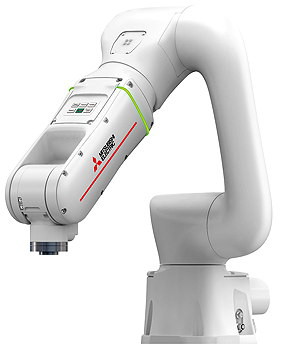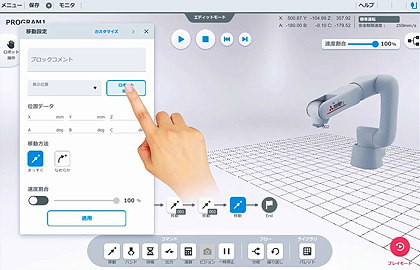- Home » News » Product News
Intuitive software speeds cobot set-ups and cuts costs

Mitsubishi Electric in Japan has announced a series of collaborative robots (cobots) designed to be deployed quickly using intuitive programming software. It says that the combination will help to achieve more efficient production, and cut the total cost of ownership (TCO) of robotic systems
The Melfa Assista cobots are designed to work collaboratively with humans using safety functions such as collision detection. They comply with the ISO 10218-1 safety requirements for industrial robots and the ISO/TS15066 specification for cobots. Compliance with the functional safety standards of another international certification body is planned.
The RT VisualBox engineering software allows operating sequences to be created intuitively by linking block diagrams to form a chain of events, including connections to other devices such as grippers and cameras. The flow-chart programming technique results in fast program development and design times that help to reduce TCO.
The cobot’s movements can be taught and recorded quickly using a dedicated control panel on the robot arm, thus doing away with the need for separate teaching boxes. For simplicity, the control panel has a minimum number of buttons, allowing even inexperienced users without expert knowledge of robots to set up a system.
A bright LED that uses different colours to indicate the status of the robot is located on the robot arm for easy viewing, eliminating the need for conventional monitoring devices.
Mitsubishi expects robots that enable human-robot collaboration to help meet new requirements for adequate distancing of workers in manufacturing sites.

The programming software can be used to connect certified peripheral devices such as grippers and cameras. The range of certified companies and connectable devices will be expanded to enhance the cobots’ applications.
The collaborative robots can optionally use NSF H1 food-grade lubricant approved by the US National Sanitation Foundation for the production of food and beverage products.
Mitsubishi is initially expecting to sell about 1,000 of the cobots per year.






